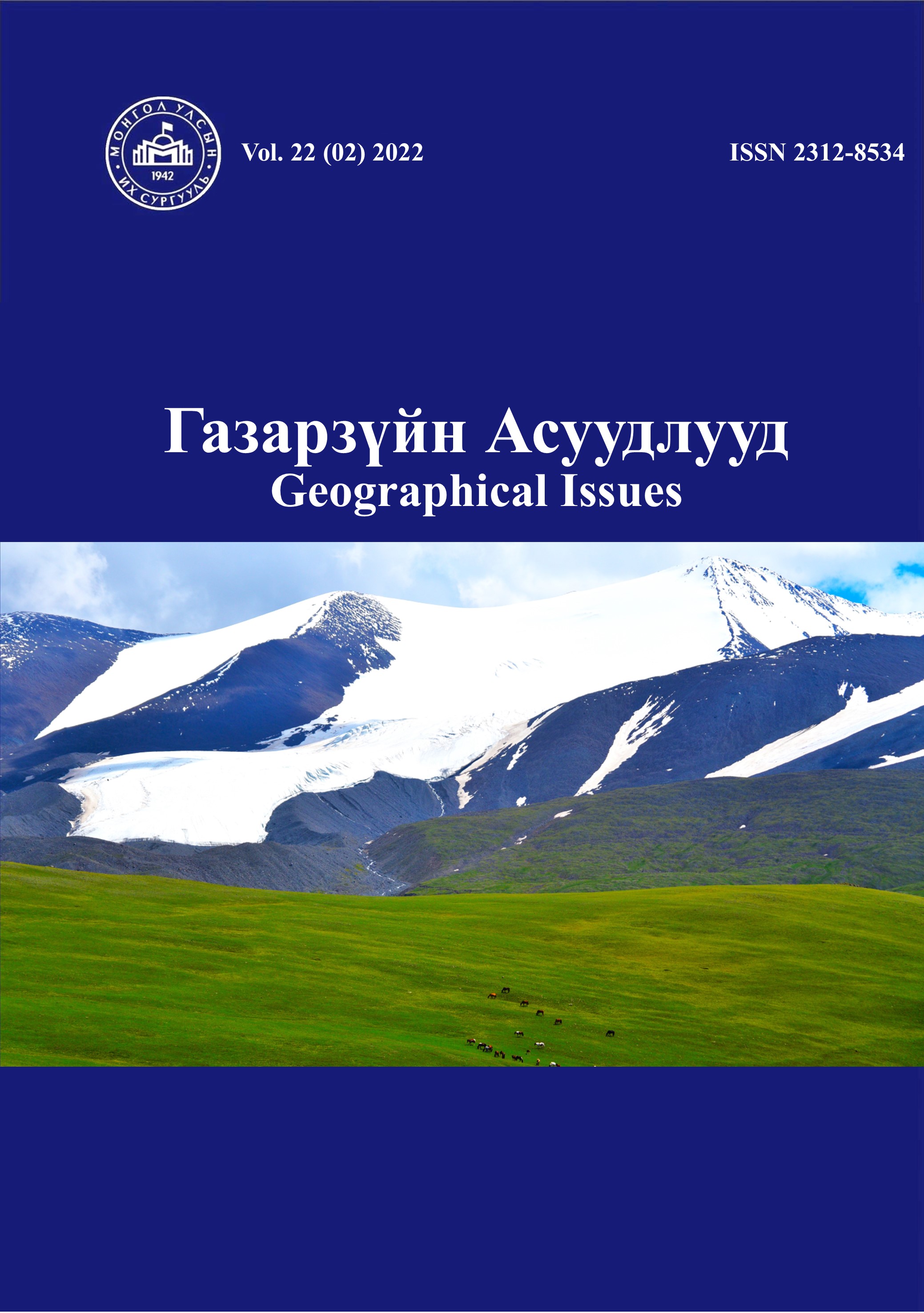Applicability Analysis of Nighttime Lights Data in the Development Research using DMSP/OLS and NPP/VIIRS satellite Imagery: An Example in Mongolia
Монгол орны хотуудын хөгжлийн түвшинг “DMSP/OLS” болон “NPP/VIIRS” хиймэл дагуулын шөнийн гэрлийн өгөгдөлд хийсэн чанарын шинжилгээ
Keywords:
DMSP/OLS, NPP/VIIRS, Mongolia, Socio-economic, Urban, Nighttime light dataAbstract
Nighttime light data provides an important method for monitoring urbanization and regional development, but its specific applicability needs to be further explored. Nighttime light data provide a new way to obtain urbanization information. Based on GIS and RS technology, this paper obtains Mongolian nighttime light data from 1992 to 2018 by correcting DMSP/OLS and NPP/VIIRS data, aiming to analyze the applicability of nighttime light data to less developed countries. The research results show that the agglomeration effect of nighttime lights in the capital city cluster of Mongolia is obvious, presenting a spatial pattern of “concentration in the north central regions, and rapid growth along the railway line”; The total value of nighttime light showed a significant growth trend after 2010, which indicates that the power supply has achieved rapid and stable growth firstly; in second, when the spatial scale is larger, the more applicable the nighttime light data is, and the higher the accuracy of reflecting social and economic activities. At the same provincial scale, only when the urbanization rate is greater than 30% and the population cannot be lost in large quantities, the nighttime light data has a positive correlation with the number of people, otherwise it is negatively correlated or irrelevant; in third, NPP/VIIRS has detected more settlements than DMSP/OLS, and stable power supply is key to whether settlements are detected.
Downloads
Downloads
Published
How to Cite
Issue
Section
License

This work is licensed under a Creative Commons Attribution-NonCommercial-ShareAlike 4.0 International License.






